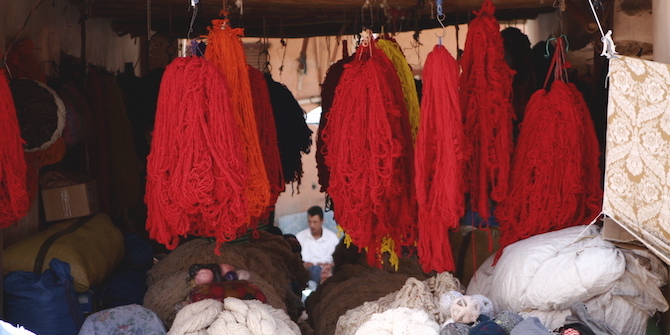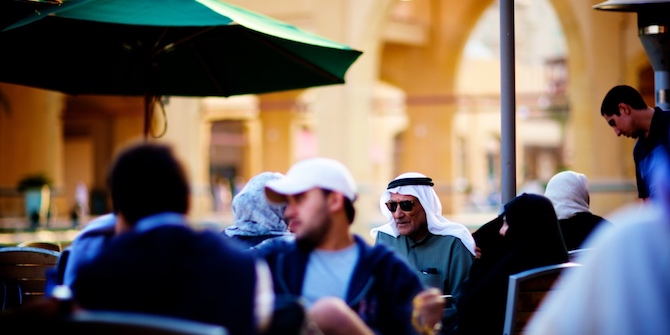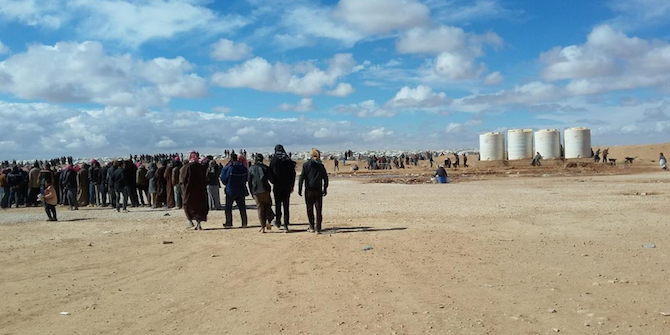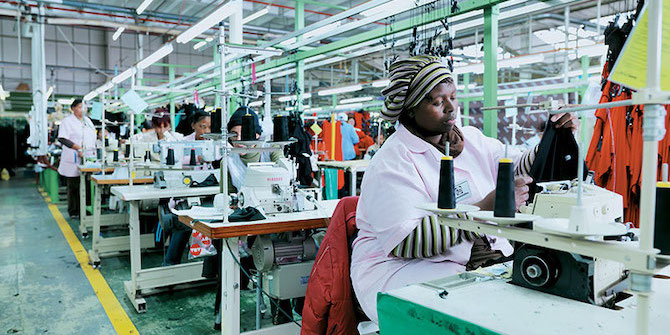by Alexandra Bounia
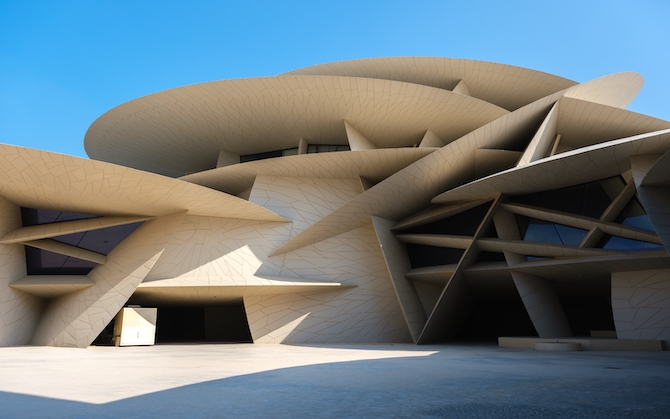
The use of material culture in the concretisation of the nation has long been discussed by scholars from various disciplines. From archaeological fragments to monumental buildings, from art works to mundane ordinary objects, assemblages of artefacts and their display in public, semi-public or even private spaces, have been used by elites (state, intellectual, social and economic) – among other stakeholders – to articulate a sense of belonging in a national body. National museums have been used as the repository par excellence for these assemblages and their articulation. Being initiated and supported, mainly but not exclusively, by the state, these museums offer a unique insight into the symbols and myths that a state wishes to use in order to formulate its power and justify its role and existence.
However, apart from the official national stories articulated in national museum, ideas about the nation that reinforce or contradict this narrative are often offered in institutions created by other stakeholders. In these cases, alternative understandings of the nation, or explanations for its resilience, are put forward for visitors to explore and empathise with. In this piece, I will briefly present how this multi-layered construction of meaning about the nation takes place in Qatar, through discussing the main narratives of three institutions: the National Museum of Qatar, the Msheireb Museums and the Sheikh Faisal bin Qassim Al Thani Museum.
The National Museum of Qatar (NMoQ) opened to the public in March 2019. Housed in an iconic building, itself a symbol of the nation, the museum presents the story of Qatar in ten sections, or three chapters. Chapter one starts from ‘the formation of Qatar’, proceeding to the natural environment and ending with the archaeology of the peninsula. Following a pattern familiar from national museums around the world that strive to connect the people to their land, the museum aims to naturalise the nation (literally and metaphorically). The second chapter explores the history of life in Qatar, presenting contrasting lifestyles in the desert and on the coast, pearls and their historical importance, objects and stories, and tangible and intangible heritage to create a romantic and nostalgic idea of the people and their traditions. The use of oral testimonies, along with selected artefacts and specially commissioned films create an immersive environment of empathy and cohesiveness. This is further enhanced in the third chapter that explores the history of Qatar from the 1500s onwards, titled ‘the challenges and triumphs that have shaped the modern state’. Finally, the visitors are invited to visit the palace of Sheikh Abdullah bin Jassim Al Thani, built in 1900 and the previous home of the national museum. This palace is itself the central artefact of the museum, symbolising continuity and the role of the Al Thani family in the historical formation of the nation.
The Msheireb Museums, developed by Msheireb Properties, a subsidiary of the Qatar Foundation, is another institution that presents its own story of Qatar and its people. Housed in four reconstructed historical houses in the centre of Old Doha, the museum articulates a narrative with a slightly different focus. In four ‘chapters’, each in one of the houses, the museum tells a story of what it means to belong to this nation, based not on the land and historical continuity, as is the case for the NMoQ, but on shared values. The Radwani House, with its timeless ethnographic displays – devoid of human presence – next to the archaeological remains, alludes to a story of humble origins, community, family and tradition. Next to it, the Company House presents the story of the discovery of oil, emphasising hard work, perseverance and endurance of hardships in order to achieve prosperity and growth for the generations to come. The Bin Jelmood House puts the question of belonging at its heart; it evokes the history of slavery in the Indian Ocean and Qatar’s role in it, in order to encourage the community to come to terms with an uncomfortable past and remember that belonging comes with the shared values – at the core of Islam – of humanity and compassion. The Mohammed Bin Jassim House updates the discussion to today and tomorrow, encouraging acknowledgement and acceptance of all aspects of the past so as to help envision a sustainable, technologically advanced and bright future. In other words, the museum connects the nation to its values and articulates a story that brings these values at the core of what belonging to the national body means.
The Sheikh Faisal bin Qassim Al Thani Museum takes a slightly different perspective. A private institution, housed in a purpose-built space within the ruling family’s lands, this museum connects the national with the personal. The story of Qatar is here presented through memories and objects connected to the national narrative, each belonging to specific individuals that have had an impact on the story of the nation. The names of important tribes are inscribed on one of the doors, and other objects that mark important transitions in the nation’s life – like the first airplane of Qatar Airways, or the first car of the Emir of Qatar – are on display, along with mundane, personal objects that the collector or his family appreciate for marking important moments in their lives. Densely populated with mannequins and photographs, the ethnographic displays serve the same purpose of giving the nation a face and making its story a story of the ‘ordinary human being’. In this sense the national is dissolved into the personal, and the personal becomes the national.
Museums offer a shared repertoire of images and objects to allow for, and facilitate, the construction of meaning, memory and identity. The materiality of this repertoire makes it a powerful medium for socialisation, as well as a powerful tool for ‘political pedagogy’. Further exploration of how this is done, how different stakeholders use this materiality, as well as the setting of a museum, to articulate their views and ideas of the nation, allows for a better understanding of nuances in terms of political visions, aspirations and interpretations of what keeps the nation together and how this togetherness can be ensured and perpetuated.
This is part of a series emerging from a workshop on ‘Heritage and National Identity Construction in the Gulf’ held at LSE on 5–6 December 2019. Read the introduction here, and see the other pieces below.
In this series:
- Introduction by Courtney Freer
- Souvenir Sovereignty in Qatar by Suzi Mirgani
- Examining Kuwait National Museum by Sundus Alrashid
- Urban Planning and its Legacy in Kuwait by Alexandra Gomes
- Museums as Political Institutions of National Identity Reproduction: Are Gulf States an Exception? by İdil Akıncı
- The New Populist Nationalism in Saudi Arabia: Imagined Utopia by Royal Decree by Madawi Al-Rasheed
- Heritage and Sectarianism in Bahrain by Thomas Fibiger
- Dubai Expo 2020 and Ancient Mercantile Heritage by Robert Mogielnicki
- Managing UNESCO World Heritage Sites in Saudi Arabia: Contribution and Future Directions by Abdulelah Al-Tokhais
- Finding Mariam: The Invisible Woman in Kuwait’s National Heritage Mythology by Alanoud Al-Sharekh
- Cultural Attendance: Attracting the Crowds to Museums in Saudi Arabia by Maha al-Senan
- Religion and Heritage in the Gulf: Significant in its Absence? by Courtney Freer
- Historical Archaeology in the Gulf by Robert Carter
- Militarised Nationalism in the Gulf Monarchies: Crafting the Heritage of Tomorrow by Eleonora Ardemagni
- The Practice of Heritage in the Northern United Arab Emirates by Matthew MacLean
- Implicit and Explicit Cultural Policies in Qatar: Contemporary Art Production and Censorship by Serena Iervolino
- The UAE State ‘Rebirthing’ of Motherhood: Who is birthing who? by Rima Sabban



